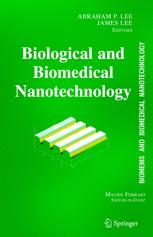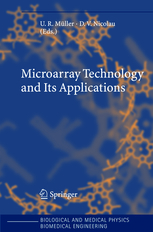Books chapters
- Mackay, I.R., Martinez-Neira, R., Whittingham, S., Nicolau, D.V., Toh, B-H. Autoantigenicity of Actin. In Actin-Binding Proteins and Disease. Remedios, C.d., Chhabra, D. (Eds.), in Protein Reviews Series. Atassi, Z.M. (Ed.), Vol. 8, 2008, [ISBN 978-0-387-71747-0]

Actin is one of the most abundant of the constituents of the proteome. In its polymeric filamentous form, actin is a critical component of the cytoskeleton, so influencing cell shape and motility. It is viewed by the research community from several different perspectives. For example, cell biologists view actin as the major element in a complex suite of molecules that maintain cell form and mediate cellular motility responses to various stimuli, e.g., chemotaxis, covered in detail in other chapters of this book. Analytical biochemists take advantage of the cellular abundance and high conservation of structure of actin to use it as a “housekeeping” protein control for particular functional studies on other elements of the proteome. Immunopathologists and diagnostic serologists are interested in the propensity of actin to behave as an autoantigenic molecule, which it does in virtually just one disease, autoimmune hepatitis (AIH). This chapter is written from this third perspective. The chapter is introduced by a brief survey of immunity and autoimmunity, and the nature of the disease AIH in which F-actin functions as an autoantigen. The chapter examines anti-F-actin in terms of its origins and significance, and possible role in immune-mediated destruction of hepatocytes. Functional effects in vitro of anti-F-actin (delivered as Fabs of IgG) on actin motility are demonstrable using an actin-myosin system in a motility chamber.
- Nicolau, D.V., Dynamic nanodevices based on protein molecular motors. In Biological and Biomedical Nanotechnology, Lee A.P., Lee, J., (Eds.) Series: BioMEMS and Biomedical Nanotechnology, Ferarri M. (Series Ed.), 327-363, Springer 2007 [ISBN: 978-0-387-25561-3]

Most of the present micro/nano biodevices are designed for a single use, as opposed to ‘classical’ non-biodevices (e.g., from the steam engine to the microchip). Once their function, be that simple molecular recognition like in microarrays or even biomolecular computation as in DNA computation arrays, is fulfilled and the information is passed further to signal and information processing systems, the product becomes functionally obsolete. There are indeed a few notable exceptions, e.g., biosensors and charge-controlled DNA hybridization arrays, but even these function for a limited period of time. This one-use character of micro/nano-biodevices is more an expression of the lack of robustness of their components (e.g., proteins, cells) rather than one of economic sense. Moreover, in advanced biodevices the biomolecular recognition will help to achieve their function, rather than being their function, whichwould allowthese devices to have a continuous instead of one-off mode of operation.
- Hanson, K.L., Filipponi, L., Nicolau, D.V., Biomolecules and Cells on Surfaces – Fundamental Concepts. Nicolau, D.V., Demers, L., Ginger, D.S., Nanoarrays. Müller, U.R. and Nicolau, D.V. (Eds.), In Microarray technology and its applications. Springer 2005 [ISBN: 978-3-540-26578-8]

The genomics revolution would not have been possible without the 'parallelisation' offered by microarray technology. This technological - and commercial - success has since been emulated by other applications areas, with a tremendous amplification of innovation. This book describes the fundamentals and latest developments in microarray technology, as well as its future directions. It presents detailed overviews of the different techniques of fabricating microarrays, of the chemistries and preparative steps involved, of the different types of microarrays, and of the instrumentation and optical issues involved.

